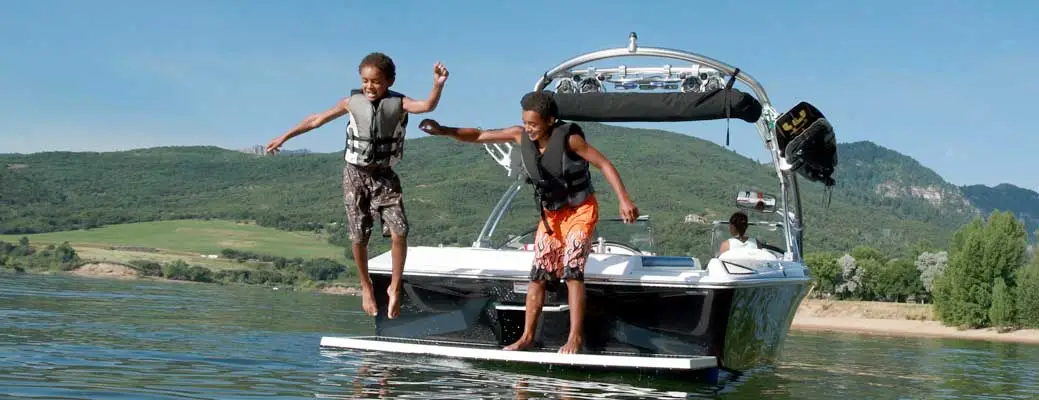Boating with Kids: What You Need to Know


If you’ve added any new members to your family recently — or a boat is the newest member of your family — your excitement about summer might be tinged with concern for keeping your kiddos secure while on board. Not to worry. Boating can be a safe activity your offspring will love and will likely pass down to their children someday. Follow these boating safety tips to help ensure a blissful summer and cherished memories for years to come.
Docking a boat differs from parking a car, and to new boaters or captains with kids, it can be a source of stress. It doesn’t have to be. Just communicate a plan with the family beforehand. Teach little ones to keep their hands inside the boat and avoid grabbing for the dock, lines or pilings. Only adults or trained teens on board should be designated with first mate tasks. Of course, someone should always remain focused on supervising the tykes.
While cruising, the safest place for your personal floatation device (PFD)-clad infant is in your arms. Never place a baby in a carrier. Teach toddlers to stay seated and to hold on while your boat is in motion. If you have a closed bow, never allow your kids to ride on it while the boat is underway. If you have an open bow with designated seating, reserve the space for tweens and teens.
Slather young boaters with sunscreen and dress them in hats, sunglasses and even SPF clothing, which can help keep them cool. Find a reprieve from the rays if possible. Maybe your boat has a pop-up canopy or features a cuddy cabin where they can have a snack or take a nap.
Invest in U.S. Coast Guard-approved PFDs specific to your child’s age and weight. You can check for the approval on the label.
Infants require an infant life jacket, which is a Type II vest with an adjustable crotch strap and a “heads-up” collar to keep their adorable faces out of the water. Wait until your infant is at least 18 pounds and can wear a properly fitted PFD before going on board a vessel, says the U.S. Coast Guard.
Toddlers (18 months to 3 years old) usually require a vest for kids 30 to 50 pounds. These are Type II or Type III vests with a grab handle and crotch strap.
Youth jackets are Type II or Type III and are labeled for kids 50 to 90 pounds. They may still contain the crotch strap to prevent the jacket from riding up.
Tweens or Teens who are above 90 pounds can choose jackets that fit their weight and unique style. Opt for adjustable buckles to accommodate these growing years.
For toddlers on up, attach a safety whistle and an emergency light to each life jacket and teach your kids how to use them. The U.S. Coast Guard requires that all children under age 13 must wear a PFD on a boat that is underway, unless the child is below deck or in an enclosed cabin. Of course, it’s wise for both children and adults to wear a life jacket while on deck when a boat is in motion. Modeling good life jacket habits in front of your kiddos will encourage them to vest up.
Kids who meet age requirements should take their state’s boater’s safety course. In many states, a boater’s safety course allows a teen to operate a vessel under adult supervision. Increasing your children’s proficiency and knowledge about boating protects them while also growing their passion for being on the water. The BoatUS Foundation offers a free online course for some states where applicable, but other states require proctored testing. Find out the laws for your state and help your child earn a certificate to become a true skipper.
Before you hit the water this summer, be sure you have the proper coverage to keep your boat protected. Contact your local Farm Bureau agent with any questions.